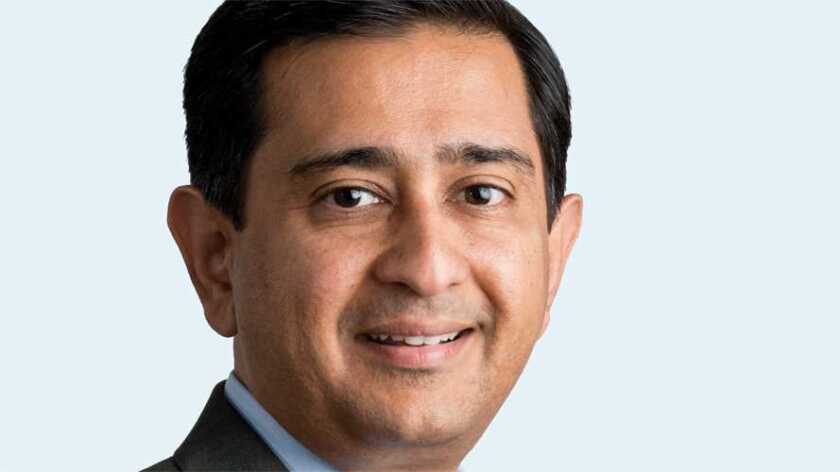The government of India’s plan to create 100 smart cities is good news to the ears of Sumeet Walia, who heads enterprise and carrier services at Tata Communications. Especially as for Tata, just as for many other carriers, the traditional business of wholesale voice is in decline.
“Anything that touches our home market is interesting,” says Walia. Tata Communications, a division of the vast industrial Tata conglomeration, has built an internet of things (IoT) network using LoRa, the proprietary wireless technology. “It’s a very interesting play for us as we see the development of smart cities,” he says. There are “more and more” companies using IoT and he prefers LoRa “because mobile and cellular IoT have a high drainage of power. With LoRa, you get non-line-of-sight, deeper penetration and a longer device life.”
In Tata Communications’ home market “we have constructed a LoRa network for IoT – an India-specific solution – over the last 18-24 months”. Among the early adopters are government departments. “One of the solutions across industry is for sanitation and garbage collection – plus street lighting to drive more effective use of electricity”.
Smart cities across India
That’s why India’s plan to create 100 smart cities excites him. “By the very word ‘smart’ you expect lots of devices.”
Tata’s LoRa network is “in 45 cities right now, 100 over a period of time”, he adds. “It’s a service we’ve been building ourselves and taking to market as Tata Communications.” But the company will be working with “other partners to create solutions”, he adds. “And we will offer as a white label solution to others.”
The company has “started several services with a couple of customers”, says Walia. “We’re working with governments and enterprises as well. Enterprises themselves are looking at campus solutions.” He lists manufacturing and applications such as health and safety.
The involvement of the 150-year-old Tata Group is significant. “The group chairman Natarajan Chandrasekaran has a One Tata mandate,” says Walia. “There’s an opportunity for us to help companies in the Tata group for digital transformation.” Tata Motors owns Jaguar Land Rover; Tata Global Beverages owns Tetley Tea; Tata Steel operates from the UK – where it bought Corus, the former British Steel – to China.
Walia has been in Tata Communi-cations for almost two decades. He was in Tata Internet Services in 2002, when he saw the group buy the Indian government’s international telecoms company, VSNL, and transform it with the addition of companies such as Tyco Global Network in 2004 and Teleglobe in 2005.
Walia moved from the former VSNL when it was acquired by the Tata Group back in 2002, as did others from Tata Internet Services.
“Since 2002 I’ve had multiple roles in the market.” And Tata Communications and the market have changed too. “As a company we have been shedding skins and acquiring new ones,” says Walia.
Tata Communications is facing the same transformation challenges as others in the industry. “Most telecoms companies are evolving into a telecoms-plus-plus provider. There’s a changing landscape in telcos’ traditional opportunities,” says Walia, who heads enterprise and carrier services in India as well as the Asia Pacific, the Middle East, central Asia and Africa. That means most of Tata Communications activities outside the North American and European markets.
“We are front and centre of being a digital infrastructure provider. We’ve gone from being a global network operator to a digital infrastructure operator. We have 700,000km of network,” he says. “The voice business has been on an annual decline.”
It’s going to the over-the-top (OTT) providers. “Better technology is available and there’s a better customer experience.” The irony is not lost on any of us: we’re doing this interview via a multi-way Skype call connecting London and Mumbai. Overall, Tata Communications is expecting wholesale voice to decline 5% a year over the next five or six years, but in North America and Europe it’s faster, maybe 6-7½% a year.
Share of a shrinking pie
“The Middle East and Africa are declining but not as sharply. That’s the story for us. Growth is going to come from grabbing market share in a shrinking pie.” The focus on the Middle East and Africa works well, as 45% of the 5.4 billion annual voice minutes into India originate in those regions, he says.
Meanwhile the market in India itself has been in turmoil over the past few years, after Reliance Jio came into the business with a 4G-only offer at the end of 2015. Some mobile operators have gone out of business and others have merged, leaving the market with a similar number of players to most other countries – instead of the nine or 10 it used to have.
“The consolidation was waiting to happen as there were too many operators. The entry of Jio accelerated an eventuality that would have happened anyway,” says Walia. “That has given us a great opportunity.”
But there’s another opportunity – with the OTT players that are soaking up much of the business. “The approach we’re taking for voice is not just a minutes-trading mode but more of a partnership model. The reality is we’re working with OTTs and looking at the termination of their international voice minutes – it’s an interesting space in that sense.” Tata Communications is providing “not just the best cost but quality and tools”.
This is inevitable, he says. “In markets like the Middle East there’s been a change in the commercial model, a huge explosion in broadband. This will see a big impact on OTT voice in markets like the Middle East. At the moment they are 10 years behind other markets.” But Tata Communications’ evolution to a global digital network gives it new opportunities. “The shift to digital transformation, using the portfolio we’ve been building, matches what most enterprises and telcos are doing in their own transformation.”
New partnerships in SD-WAN
Even traditional enterprise services – such as virtual private networks and international private lines – are being transformed with the arrival and uptake of SD-WANs.
“We have our own SD-WAN offer, and we are constantly looking at new partnerships with key players in this market. We’re expanding and covering greater territory.”
And on all this Walia and his colleagues are building newer services, including data centre services, managed services and managed third party cloud services. “The cloud platform will drive a lot of our future growth,” he adds, while “data centres are being more and more virtualised. On top of this – as people adopt more and more cloud – the need for security is greater and greater. We’ve been building security services with partners around the world.”
Tata Communications already has a cyber security centre in Dubai, and “we intend to build further security operations centres in Europe – to help customers comply with the GDPR – and the US. There are further opportunities in the Middle East too.” Why’s that? “The geopolitical environment is volatile in those markets,” he says. “In Saudi Arabia, for example, one of the largest consumers of services is the US Army and Navy. They need the services there.”
Tata Communications has acquired Teleena, based in the Netherlands, to boost its IoT activities. “It gives a cross-the-board IoT platform,” he says. The company offers a SIM-based roaming facility and is also an enabler of mobile virtual networks.
And Tata Communications partners with a South African company, DTTech, “to create a mobile and IoT platform built on the acquisition of Teleena. It’s a deal we’ve signed and over the next seven or eight months DTTech will be ready to go to market,” says Walia.
“Our strength as a company is built on the partnerships we carry. We have a very strong enterprise business and a very strong service provider business as a carriers’ carrier.”
He notes how the industry is changing, taking his example from the subsea cable world. In the past when you built cable systems they were capex heavy, he says. “Newer cable systems are getting built and the models are now more partnership led. The idea is to nurture these partnerships to construct much needed capacity.”






